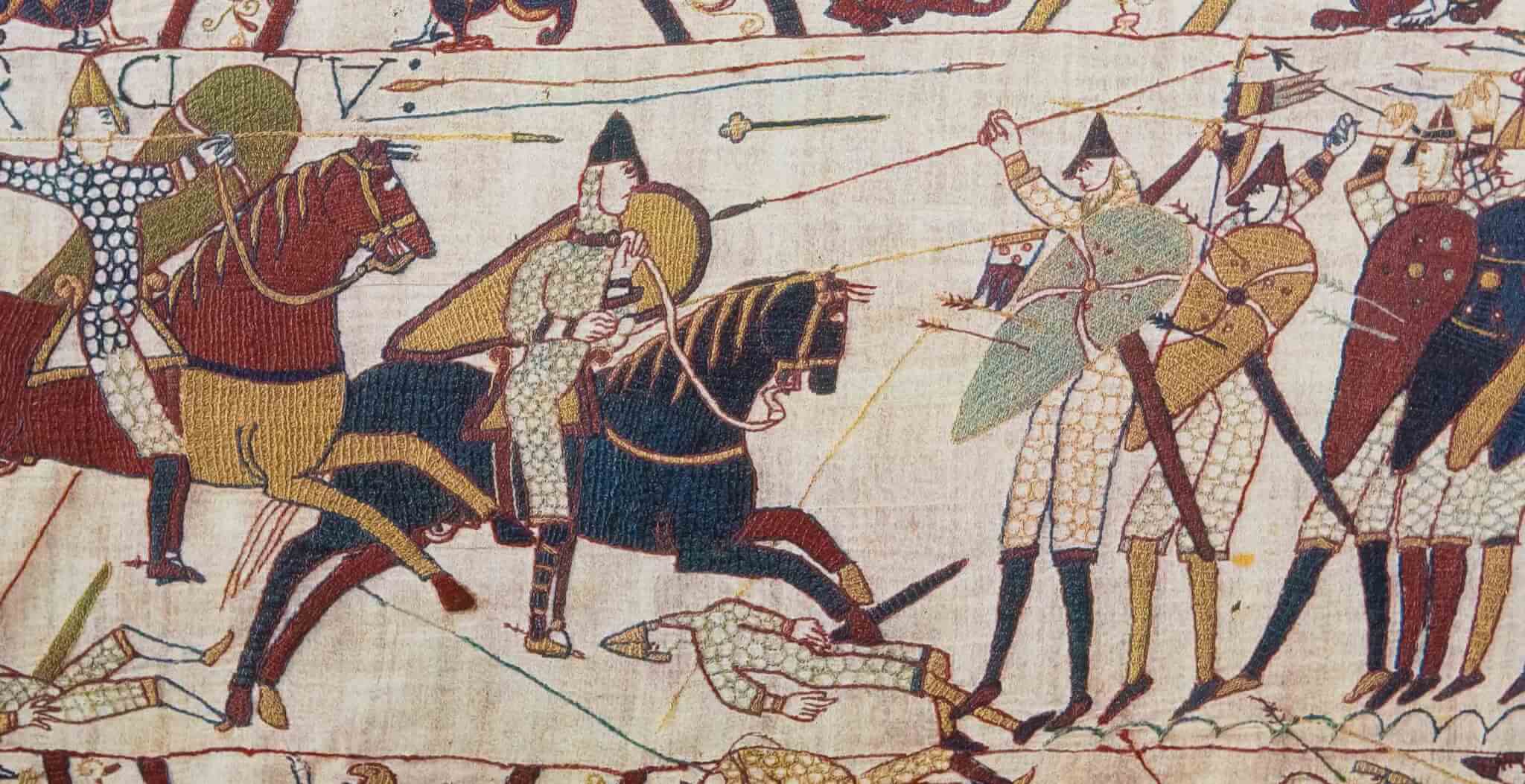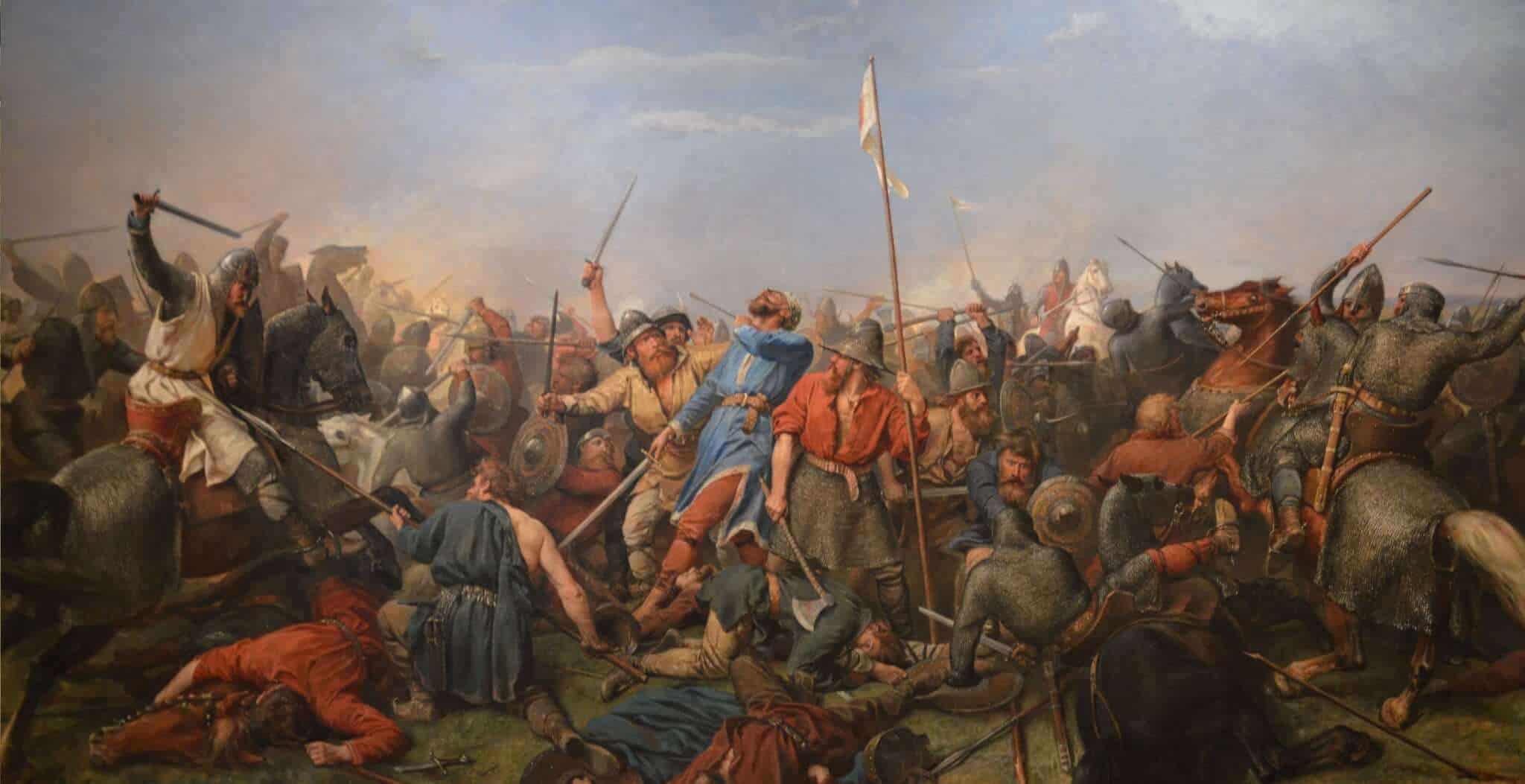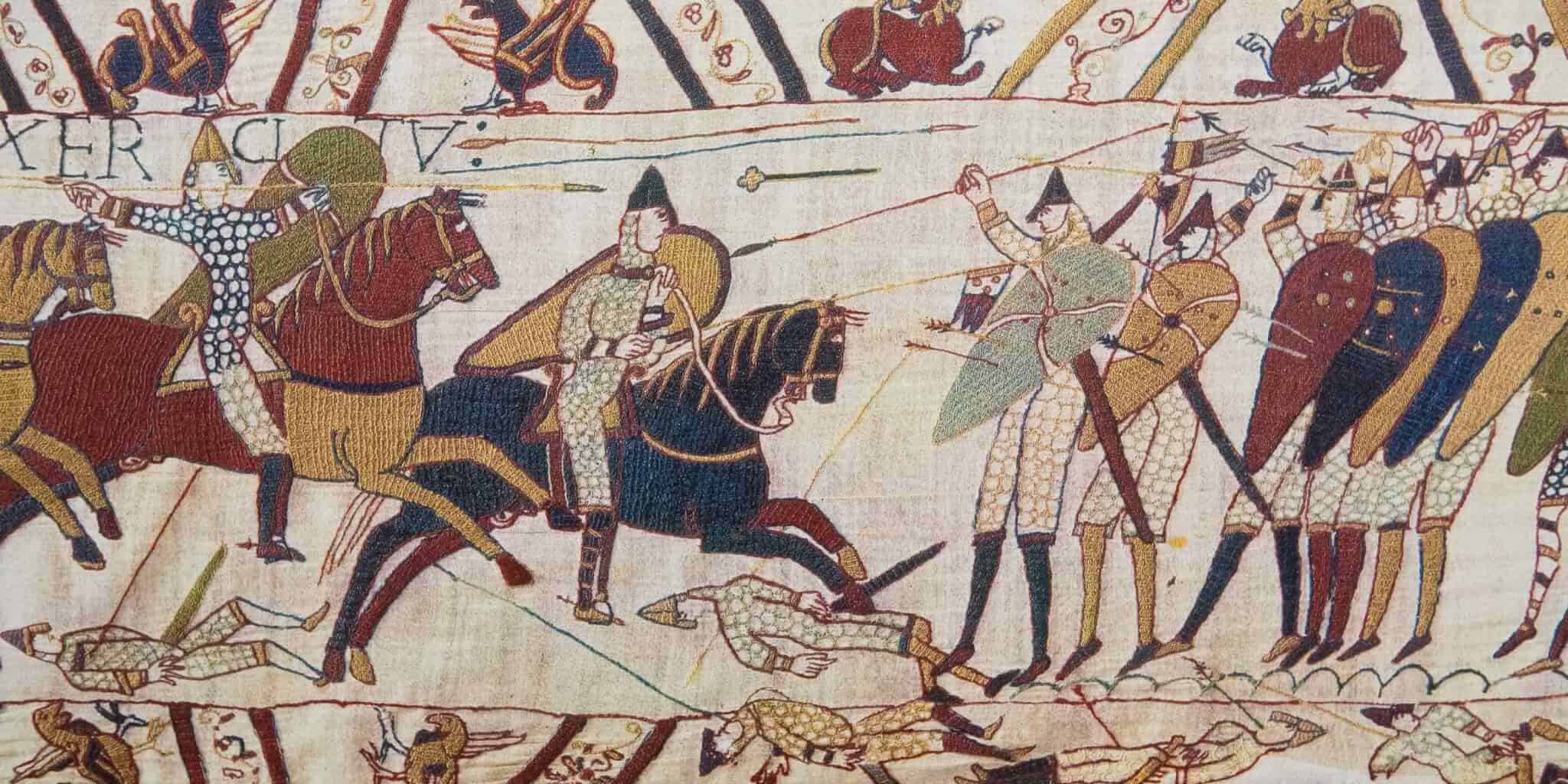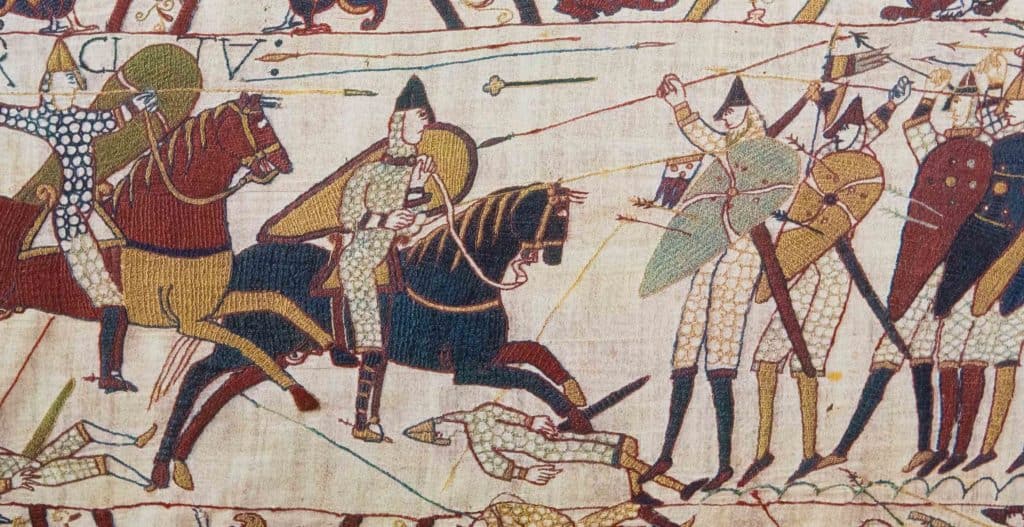The town of Battle is located in the south east of England, best known for being the site of the Battle of Hastings in 1066.
The Battle of Hastings saw the defeat of Saxon King Harold II by William the Conqueror, who then became King William I. This defeat was a dramatic turning point in British history; Harold was killed in battle (allegedly shot in the eye with an arrow!) and although there was further resistance to William’s reign, it was this battle that first handed him power of England. Duke William of Normandy had set out to claim the throne that he believed rightfully his and gathered a fleet of 700 ships to set sail for England. A tired English army, who had just defeated a Viking invasion at Stamford Bridge in Yorkshire, met the Normans approximately 6 miles north west of Hastings (where they landed), on Senlac Hill. It was here that approximately 5000 of the 7500 English soldiers were killed and 3000 of the 8500 Norman men perished.
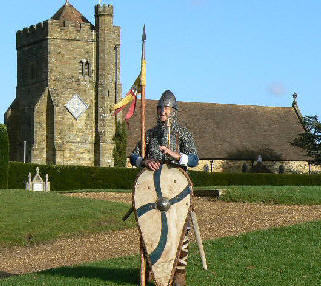
Senlac Hill is now the location of Battle Abbey, or Abbey of St Martin, erected by William the Conqueror. He had vowed to build such a monument in the event that he won the battle, to commemorate it; the Pope had ordered that it be built as a penance for the loss of life. Building of the abbey took place between 1070 and 1094; it was dedicated in 1095. The high altar of the abbey is said to mark the spot at which King Harold died.
Today, the abbey ruins, cared for by English Heritage, dominate the centre of the town and are a major tourist attraction. Battle was built up around the abbey and the abbey gateway is still a principal feature of the High Street, although the rest of the building is less well preserved. The gateway is newer than the original abbey though, built in 1338 as further protection from another French invasion!
Battle is also known for it being the centre of the British gunpowder industry in the 17th century, and the best supplier in Europe at that time. Indeed, the mills in the area supplied the British army with gunpowder right up to the Crimean War. It is even supposed that the gunpowder used by Guy Fawkes was acquired here. This explains why the oldest effigy of Guy Fawkes is held as an artefact in the Battle Museum.
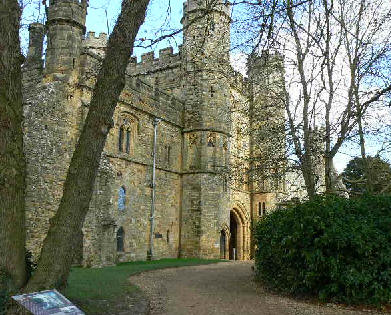
Battle is not only steeped in social history but also natural history. The town is set within the beautiful rolling countryside of East Sussex, with the south coast in easy reach. Bringing both the social and natural history together is the 1066 Country Walk, on which you can walk in the steps of William the Conqueror. It is a 50km walk (but not a strenuous one!) which passes from Pevensey to Rye, through Battle. It takes you through ancient settlements and a variety of landscapes; woodlands, coasts and hillsides. Come and experience the landscape that witnessed a turning point in British history.
Getting here
Battle is easily accessible by both road and rail, please try our UK Travel Guide for further information.
Anglo-Saxon Sites in Britain
Browse our interactive map of Anglo-Saxon Sites in Britain to explore our listing of crosses, churches, burial sites and military remains.
British Battlefield Sites
Our interactive map reveals the locations of the Battlefield Sites of Britain, from the Battle of Brunanburh in 937 to the Battle of the Braes in 1882.
Museums
View our interactive map of Museums in Britain for details of local galleries and museums.
